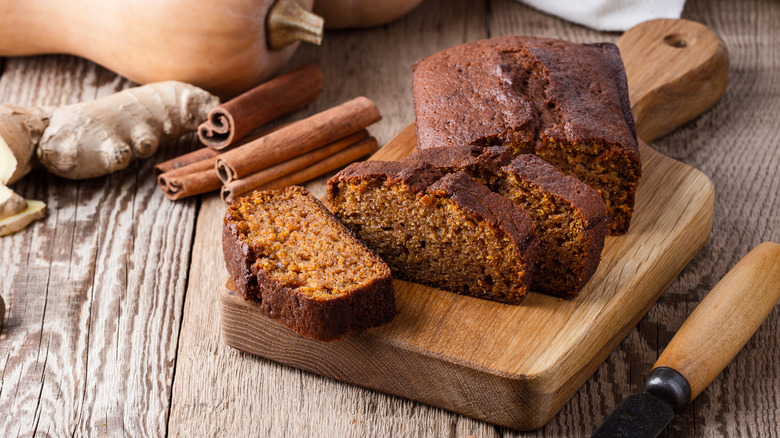Resist The Urge To Overmix Wet Gingerbread Cake Batter
Gingerbread cake is known to fill every crevice of the kitchen during the holiday season. But before you break out your whisks and bowls and everything you need to make your beloved seasonal dessert, you need a PSA about mixing the wet ingredients.
Gingerbread cake is special because of the key ingredient that makes it what it is, and that's the molasses. While molasses' primary function is to add its sweet and burnt caramel flavor to the mix, this viscous liquid also causes your batter to be wetter than a normal cake batter. For this reason, your first instinct might be to mix it more than you would a regular cake batter but don't unless you want to serve a pitcher of water alongside each slice of cake.
Over-mixing your dry and wet ingredients for a gingerbread cake makes for a much denser crumb than what you or your mouth wants. In fact, over-mixing can really wreak havoc with its consistency.
It could cause the middle to sink
While this common mistake may seem minor, it really does create an inferior end product. The goal with any cake is to create something moist and soft, but over-mixing the flour results in elastic gluten strands forming leaving you with a gummy texture. Not to mention, the middle of your cake may sink with over-mixing and it will probably taste more like pound cake than gingerbread.
That's why when you blend your flour, sugar, ginger, baking soda, and powder with those wet ingredients, you don't want a batter that is thick. Instead, you want to mix until those flour streaks are no longer visible. This is when you want to stop and turn off your mixer or put down your mixing spoon. The very nature of molasses adds more moisture to your baked goods, making them denser, but it also makes them sweeter and imparts an intense, lovely flavor to whatever it touches.

